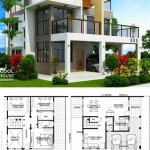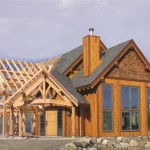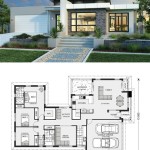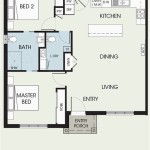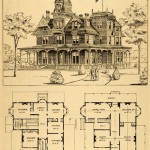Navigating the Plans for a Tiny House: A Comprehensive Guide
The tiny house movement has gained considerable momentum, attracting individuals seeking financial freedom, minimalist lifestyles, and reduced environmental impact. Embarking on this journey requires meticulous planning, and the cornerstone of any successful tiny house project lies in having well-defined and comprehensive plans. These plans serve as a roadmap, guiding the construction process, ensuring compliance with regulations, and minimizing costly errors. This article explores the essential aspects of tiny house plans, addressing key considerations and offering insights into the design and development phase.
Understanding the Importance of Detailed Tiny House Plans
Detailed and accurate tiny house plans are crucial for several reasons. First and foremost, they provide a clear visual representation of the intended structure, allowing builders and homeowners to understand the design, dimensions, and layout. This visual clarity reduces ambiguity and minimizes misinterpretations during the construction process. Secondly, comprehensive plans facilitate accurate material estimation, preventing overspending and minimizing waste. By precisely quantifying the required materials, builders can optimize procurement and manage project costs effectively.
Furthermore, meticulous plans are essential for obtaining necessary permits and adhering to local building codes. Many jurisdictions have specific regulations regarding the size, construction, and placement of tiny houses, and detailed plans demonstrate compliance with these standards. Failure to meet these requirements can result in delays, fines, or even the rejection of the project. Lastly, well-documented plans serve as a valuable reference throughout the construction process, enabling builders to address unforeseen challenges and make informed decisions. They provide a historical record of the design and construction, which can be useful for future maintenance and modifications.
Key Elements Included in Tiny House Plans
Comprehensive tiny house plans typically include a range of drawings and specifications, providing a detailed overview of the project. These elements often encompass site plans, floor plans, elevations, sections, and detailed construction drawings. Each of these components plays a crucial role in conveying the design intent and guiding the construction process.
Site Plan: The site plan illustrates the location of the tiny house on the property, including its orientation, setbacks, and proximity to existing structures and utilities. This drawing is essential for ensuring compliance with zoning regulations and optimizing the placement of the house for sunlight, privacy, and accessibility.
Floor Plan: The floor plan provides a top-down view of the interior layout, showing the arrangement of rooms, fixtures, and appliances. This drawing is critical for optimizing the use of space and creating a functional and comfortable living environment. It should include accurate dimensions, door and window locations, and details of built-in furniture and storage solutions.
Elevations: Elevations are orthographic projections that show the exterior appearance of the tiny house from different perspectives, typically the front, rear, and sides. These drawings illustrate the roofline, window and door placement, and exterior finishes. They are essential for visualizing the overall aesthetic of the house and ensuring that it blends harmoniously with the surrounding environment.
Sections: Sections are cutaway views that reveal the internal construction of the tiny house, showing the framing, insulation, and mechanical systems. These drawings provide valuable information for builders, illustrating the structural components and how they are assembled. They are also helpful for understanding the thermal performance and energy efficiency of the house.
Detailed Construction Drawings: Detailed construction drawings provide specific instructions for building individual components of the tiny house, such as walls, floors, roofs, and cabinets. These drawings include dimensions, materials, and assembly details. They are essential for ensuring that the house is built to code and that the quality of construction meets the homeowner's expectations.
In addition to these drawings, tiny house plans typically include specifications that describe the materials, finishes, and equipment to be used in the construction process. These specifications should be clear, concise, and consistent with the drawings. They should also include information about the manufacturer and model number of each item, as well as any relevant performance characteristics.
Factors to Consider When Selecting and Interpreting Tiny House Plans
Choosing the right tiny house plans is a critical decision that can significantly impact the success of the project. Several factors should be considered when evaluating different options, including the homeowner's needs, budget, local building codes, and the expertise of the builder. It is also important to carefully review the plans to ensure that they are accurate, complete, and easy to understand.
Homeowner Needs and Lifestyle: The plans should reflect the homeowner's individual needs and lifestyle. Factors such as the number of occupants, work-from-home requirements, storage needs, and accessibility considerations should be taken into account when selecting a suitable design. The layout should be functional and comfortable, providing adequate space for living, sleeping, cooking, and bathing.
Budget: The budget is a significant constraint that can influence the design and construction of a tiny house. The plans should be realistic and achievable within the available financial resources. It is essential to consider the cost of materials, labor, permits, and other expenses when evaluating different options. Opting for simpler designs and readily available materials can help to reduce costs.
Local Building Codes: Compliance with local building codes is mandatory for all tiny house projects. It is crucial to research the specific regulations in the relevant jurisdiction and ensure that the plans meet these requirements. Factors such as minimum ceiling heights, window sizes, and egress requirements should be carefully considered. Consulting with a local building official can help to clarify any questions or concerns.
Builder Expertise: The expertise of the builder is another important factor to consider. The plans should be appropriate for the builder's skill level and experience. Complex designs and unconventional construction techniques may require specialized knowledge and equipment. Choosing a builder with experience in tiny house construction can help to ensure that the project is completed successfully.
Reviewing and Interpreting Plans: Once the plans have been selected, it is important to carefully review them to ensure that they are accurate, complete, and easy to understand. Pay close attention to the dimensions, materials, and construction details. Identify any potential problems or inconsistencies and discuss them with the designer or builder. It is also helpful to create a checklist to track the progress of the construction and ensure that all aspects of the project are being addressed.
Navigating Tiny House Regulations and Permitting
One of the most challenging aspects of building a tiny house is navigating the complex web of regulations and permitting requirements. Many jurisdictions lack specific regulations for tiny houses, which can create uncertainty and confusion. It is essential to research the local building codes and zoning ordinances to determine the applicable requirements and obtain the necessary permits before starting construction.
Researching Local Regulations: The first step is to research the local building codes and zoning ordinances. Contact the local building department or planning department to obtain information about the regulations that apply to tiny houses. Inquire about minimum size requirements, setback regulations, and construction standards. Determine whether tiny houses are allowed as accessory dwelling units (ADUs) or require a separate building permit.
Understanding Zoning Ordinances: Zoning ordinances regulate the use of land and the type of structures that can be built in different areas. Review the zoning ordinances to determine whether tiny houses are permitted in the desired location. Pay attention to restrictions on lot size, building height, and density. Determine whether the property is subject to any easements or covenants that may affect the construction of a tiny house.
Obtaining Permits: Once the applicable regulations have been identified, the next step is to obtain the necessary permits. This may involve submitting detailed plans, specifications, and other documentation to the local building department. The permitting process can be lengthy and complex, so it is important to start early and be prepared to provide all required information. Be prepared to address any concerns or questions raised by the building officials.
Working with Building Officials: Developing a positive relationship with the building officials can be invaluable in navigating the permitting process. Be respectful, professional, and willing to cooperate. Address any concerns or questions promptly and thoroughly. Seek clarification on any ambiguous or unclear regulations. Consider inviting the building officials to visit the site during the construction process to ensure that the project is progressing according to plan.
Alternative Strategies: In some cases, it may be difficult or impossible to obtain permits for a tiny house due to restrictive regulations. In such situations, alternative strategies may be considered. One option is to build the tiny house on wheels and register it as a recreational vehicle (RV). This may allow the house to be parked on private property without being subject to the same building codes as traditional dwellings. However, RV regulations may also impose restrictions on long-term occupancy and utility connections.
Another option is to connect with other tiny house enthusiasts and advocates in the community. These groups may be able to provide support, resources, and guidance on navigating local regulations. They may also be working to promote changes to zoning ordinances and building codes to make it easier to build and live in tiny houses.

Affordable Tiny House 18 X 28 Adu In Law Cabin Singapore

Tiny House Floor Plans Design Your
:max_bytes(150000):strip_icc()/__opt__aboutcom__coeus__resources__content_migration__treehugger__images__2018__03__tiny-house-macy-miller-12a993a38eda4913a0e8ab1b231e79d3.jpg?strip=all)
Want To Build A Tiny House Here S Where You Can Find Floor Plans

The Athrú Tiny House Humble Homes

Tiny House Floor Plans Absolute Houses

Tiny House Floor Plans 32 Home On Wheels Design

Tiny House Design Floor Plans

Floor Plan For Tiny House

10 X 20 Tiny Home Designs Floorplans Costs And Inspiration The Life
:max_bytes(150000):strip_icc()/ana-tiny-house-58f8eb933df78ca1597b7980.jpg?strip=all)
4 Free Diy Plans For Building A Tiny House

